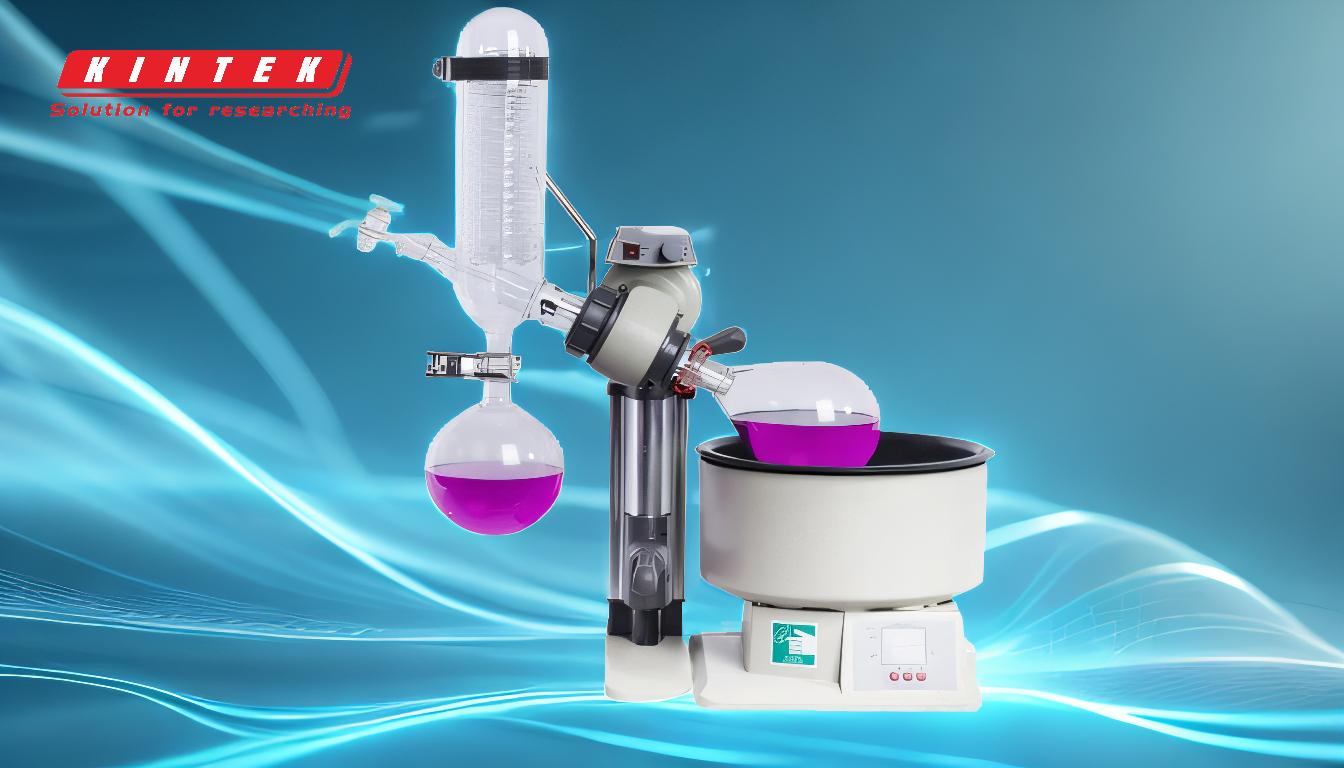A rotary evaporator is a versatile and essential tool in laboratories and industries, primarily used for solvent removal, concentration, and separation processes. The results obtained from a rotary evaporator include concentrated or purified compounds, solvent recovery, and residue formation. It is particularly effective for handling volatile solvents under reduced pressure, ensuring minimal thermal decomposition of sensitive compounds. The device is widely used in fields such as pharmaceuticals, chemistry, biology, and food production, making it indispensable for small-scale experiments and pilot production. The key outcomes are efficient solvent removal, preservation of heat-sensitive compounds, and the isolation of desired substances in the form of residues or concentrated solutions.
Key Points Explained:

-
Efficient Solvent Removal:
- A rotary evaporator is designed to remove solvents from samples quickly and efficiently under reduced pressure. This process avoids the need for heating the sample to its boiling point at atmospheric pressure, which can damage heat-sensitive compounds.
- The reduced pressure lowers the boiling point of the solvent, enabling evaporation at lower temperatures. This is particularly useful for volatile solvents, which can be removed without causing thermal decomposition.
-
Concentration of Compounds:
- One of the primary results of using a rotary evaporator is the concentration of compounds. By evaporating the solvent, the remaining solution becomes more concentrated, leaving behind the desired compound in a smaller volume.
- This is especially useful in pharmaceutical and chemical industries, where precise concentrations of active ingredients or reagents are required.
-
Isolation of Residues:
- After the solvent is removed, the desired compound often forms a residue at the bottom of the flask. This residue is the final product of the evaporation process and can be further processed or analyzed.
- The residue can be a solid or a concentrated liquid, depending on the nature of the compound and the solvent used.
-
Solvent Recovery:
- Rotary evaporators are equipped with a condenser that collects the evaporated solvent, allowing for its recovery and reuse. This is particularly important in industries where solvents are expensive or environmentally hazardous.
- Solvent recovery not only reduces costs but also minimizes waste, making the process more sustainable.
-
Preservation of Heat-Sensitive Compounds:
- The gentle evaporation process of a rotary evaporator ensures that heat-sensitive compounds, such as delicate aroma compounds or biological molecules, are not damaged. This is achieved by maintaining low temperatures during the evaporation process.
- This feature is particularly valuable in the food and fragrance industries, where preserving the integrity of volatile compounds is crucial.
-
Versatility in Applications:
- Rotary evaporators are used in a wide range of industries, including pharmaceuticals, chemistry, biology, and food production. They are ideal for small-scale experiments and pilot production due to their efficiency and precision.
- The ability to handle various solvents and compounds makes the rotary evaporator a versatile tool in both research and industrial settings.
-
Handling Large Volumes:
- Rotary evaporators can accommodate large volumes, typically up to 3 liters, making them suitable for both small-scale and medium-scale operations. This scalability is beneficial in laboratories and industries where varying quantities of samples need to be processed.
- The large capacity also allows for the processing of multiple samples in a single run, increasing efficiency and throughput.
-
Precision Engineering:
- The design of rotary evaporators includes features such as vacuum and pressure control, which enhance the efficiency of the evaporation process. These controls allow for precise adjustment of evaporation conditions, ensuring optimal results.
- The rotating flask ensures even heating and evaporation, preventing localized overheating and ensuring uniform concentration of the sample.
In summary, the results obtained from a rotary evaporator include efficient solvent removal, concentration of compounds, isolation of residues, solvent recovery, and preservation of heat-sensitive compounds. Its versatility and precision make it an indispensable tool in various scientific and industrial applications.
Summary Table:
| Key Results | Description |
|---|---|
| Efficient Solvent Removal | Removes solvents quickly under reduced pressure, preserving heat-sensitive compounds. |
| Concentration of Compounds | Evaporates solvents to leave concentrated solutions or residues. |
| Isolation of Residues | Forms solid or liquid residues for further processing or analysis. |
| Solvent Recovery | Collects and reuses evaporated solvents, reducing costs and waste. |
| Preservation of Heat-Sensitive Compounds | Maintains low temperatures to protect delicate compounds. |
| Versatility in Applications | Suitable for pharmaceuticals, chemistry, biology, and food production. |
| Handling Large Volumes | Processes up to 3 liters, ideal for small to medium-scale operations. |
| Precision Engineering | Features vacuum and pressure control for optimal evaporation conditions. |
Unlock the full potential of a rotary evaporator for your lab—contact our experts today!











